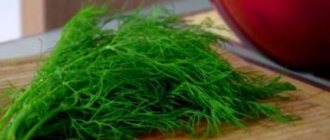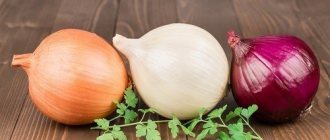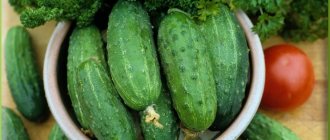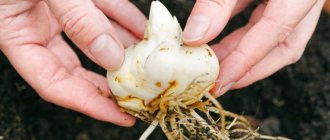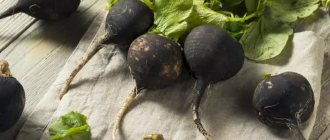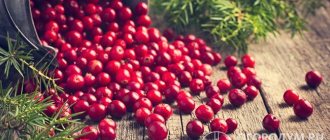OgorodGuruCom
Tips and tricks for gardeners
Popular
Polish licensed dessert raspberry variety Przehiba
Home › Berries › Storing grapes during the winter at home - is it possible in the refrigerator
The problem of how to preserve grapes for the winter at home worries those who do not want to make raisins from them and plan to keep them consistently fresh. This storage option is also possible; it can be done using several available methods. For this purpose, containers with water, hanging, shelves, combs and much more are used. To choose the right option, it is important to study in advance the features of the most popular preservation methods and focus on specific conditions.
How to Preserve Fresh Grapes for Several Days
In stores, grapes are usually sold in special packages with holes. With their help, the berries interact with oxygen, which is why the fresh taste lasts longer. If you buy grapes at the market or grow them yourself, the best place to store them for 2–5 days is the refrigerator. However, here you need to use prepared containers.
Place the fruit in a plastic bag, but do not tie it, just cover it. The best place would be a chamber for vegetables, but only so that there is not a single product nearby, otherwise the grapes will quickly absorb foreign odors. Leave it unwashed because too much water will cause it to rot faster. Also, do not forget to remove limp and rotten berries from the bunch.
When to pick grapes
Of course, basically in our country, grapes come to our table after having traveled thousands of kilometers by sea or air, then on a truck across several state borders, then after lying in a warehouse and store window.
But, nevertheless, in the south of Russia there are quite favorable conditions for growing grapes. You've probably heard and tasted the famous wines of the Kuban brand "Abrau-Durso" and the wines of the Crimean peninsula "Massandra", "New World" and "Zolotaya Balka"?
In our climate, grapes ripen from July to October, depending on the varieties. Among the earliest are “Pino” or “July Gamay”, among the latest are “Sulima”.
Varieties for long-term storage
Grape varieties have different storage periods, but only if certain conditions are met. Let's look at the strongest varieties that can stay fresh for 3-6 months:
- Winter Catalon. This grape is able to retain its qualities for up to 5 months. The berries on the stems hold tightly, but in February - March the shell becomes hard and darkens. Winter catalon tastes bitter and watery.
- Asma. The variety has a shelf life of up to 5 months, and only if it is sufficiently ripe. In the last month of winter, it begins to quickly deteriorate and change color. The shell becomes hard, but a lot of liquid collects inside the berries. It is recommended to store Asma separately from food, as it quickly absorbs foreign odors.
- Senso. One of the strongest varieties that can last until spring. The grapes are resistant to fungal growths and do not change their taste until March. The berries do not change color and stay firmly on the bunch.
- Karaburnu. The maximum shelf life is 5 months, but after 90 days it becomes vulnerable to fungus. Despite the maximum shelf life, caraburnu is quite picky.
Dark varieties stand out for their long shelf life, but they must be fully ripe.
How to protect grapes from pests
The main enemies of grapes are various insects, birds and rodents. Very often, next to a juicy bunch of grapes, you can see annoying wasps that eat away the pulp of the grapes; flies or hornets always circle around them. Methods for protecting plant fruits largely depend on the grape variety. Among the main methods of protection:
- mechanical (covering bunches of grapes with gauze, mosquito net, spandbond);
- chemical (spraying bunches with solutions that repel insects).
The need to protect berries arises at the moment of their ripening. Some winegrowers use special traps to catch wasps and other insects. They use various types of jam, malt kvass, compote, etc. as bait. One of the most effective chemical treatments for grapes against wasps is Otos. It does not pose any danger to bees. Other common means of chemical protection of grapes from insects include:
- "Dendrobacillin" and "Lepidocid". Effectively fights caterpillars. After treating the plant, they die within 1-4 days. The drug is used when cluster budworm appears in the plant. It does not affect the taste of the grapes. Ripe clusters can be collected on the sixth day after processing the plant. The drug is not dangerous for bees.
- "Gapsin." It is used to combat codling moths, plum flies, caterpillars and other insects. Not dangerous for humans and bees.
The list of chemicals is quite extensive. Each winegrower makes his choice based on his preferences. Some products are not recommended for use by people with allergies.
In the fight against birds, repellents are very often used. The simplest of them is the garden scarecrow. You can create a repellent defense using improvised means. To do this, old toys, CDs, blue plastic bags and much more that can flutter in the wind are hung in the vineyard. Mechanical means of protection include special meshes with small cells. For large areas of vineyards, such products made from polypropylene fiber are used. Some winegrowers cover their plants with a regular fishing net.
Modern industry produces special sound devices. They operate at frequencies that are perceived by birds and frighten them. Having caught the sound signal, the birds try to fly away from the place where it was given. The same devices are used in the fight against rodents. The latter create very big problems for grapes. Mice destroy vines and plant eyes - especially active in winter.
The simplest means of protection against rodents is polyethylene film. Very often the vine is surrounded by reeds and spruce branches. They create a serious obstacle for rodents.
Attention! Dandelions planted around the perimeter of the vineyard can protect the vine. They provide food for mice.
When eating dandelions, rodents are not distracted by the vine. Some winegrowers dig up the bushes of the plant and install traps in the grooves in the form of plastic bottles, in which special slits are made. Among the chemical means of protection are various types of poisons that are placed in the soil. In some cases, protecting the vineyard with the help of cats can be very effective.
A plant such as rat rat can scare off rodents with its smell. It not only repels rodents, but also causes poisoning in them. It can be planted next to the vineyard. You can replace ratwort with mint, coriander, wild rosemary or elderberry. Wormwood and tansy are suitable for repelling pests.
Attention! To avoid the invasion of rodents in the vineyards, there is no need to use straw or fallen leaves to insulate the vines.
These materials attract the attention of mice and do not interfere with their access to the vine. Garbage dumps must not be left near the vineyard.
Features of collection and preparation for storage
Harvesting grapes is a rather complex and labor-intensive process. The storage period will depend on the quality of processing. Before cutting, carefully inspect the bunch to ensure it is not green or dry. If the berries are covered with wax, and the ridge is light green and flexible, then the grapes are considered ripe and can be picked.
The bunches should be placed in boxes with the ridge up; the berries should not protrude above the level of the container. As soon as the grapes are formed, immediately lower them into the cellar, as they quickly lose their elastic shape and rot.
How to protect grapes from diseases
The most common grape disease currently is powdery mildew, known as mildew. This grape disease can be found in all areas where it is grown. The causative agent of powdery mildew is a fungus that is present on living tissues. It affects the leaves of the plant and its green shoots. The fungus tolerates frost and heat equally well. It begins to germinate at a temperature of 10 °C.
Coping with the disease is very difficult. External signs of the disease appear on the leaves of the plant and green shoots in the form of spots and mold, which can spread to the berries. In the fight against the disease I use drugs such as Antrakol, Kuproksat, Strobi and others. To prevent the disease, you can use fertilizing the plant with potassium and phosphorus fertilizers.
Other common grape diseases include:
- Oidium. A fungal disease that manifests itself as powdery dust on plant leaves and shoots, resembling ash. Causes the death of inflorescences and spoilage of berries. The incubation period of the disease ranges from 7 to 14 days. The fungus begins to germinate at a temperature of 6 °C. Prevention of the disease is by planting plant bushes in ventilated areas, thinning the shoots and tying them up. They fight oidium with the help of drugs such as Thanos, Strobi, Topaz, etc.
- Black spot. A fungal disease that affects all green organs of the plant and its woody parts. The fungus begins to activate at a temperature of 8 °C. The disease is common in areas with high air humidity: not lower than 85%. To prevent the disease, treat bushes with solutions of copper preparations after autumn pruning. Drying branches of the vine are cut off. It is extremely difficult to cope with the disease when it manifests itself. To combat black spotting, drugs such as Antrakol, Bordeaux mixture, Kuproxat and other drugs are used.
- Phylloxera. A disease in which green vegetation is covered in aphids. The way to fight the disease is radical. Vineyards with aphid-infested root systems are uprooted and burned, and a quarantine is declared in the area where they are grown. A chemical way to prevent and control the disease is to treat the soil with fumigants. For leaf aphids, bushes are treated with preparations such as “Aktelik”, “Zolon”, etc.
The list of all existing diseases is quite extensive. Many of them are regional in nature and depend on growing conditions and soil conditions. Each grape variety requires certain conditions for normal growth and ripening. Proper plant care is a good prevention of various grape diseases.
Winter storage methods
There are many ways to store grapes in winter. They all differ in conditions and level of training. Let's look at the most popular storage methods, their advantages and disadvantages.
In the cellar
At the beginning of the procedure, prepare the room. Clear away any debris and treat the walls with an antibacterial agent. The most common and simplest method is whitewashing. The cellar must be constantly ventilated, since high humidity will lead to the appearance of fungus.
Using water containers
The use of the method is most relevant for grapes with thin and weak skins. The bunch needs to be cut along with the vine, so that shoots remain on it. Then we put the main branch in the water, and leave the vine in limbo. Alternatively, use a bottle. Place the vine in a bottle with liquid and hang the clusters in a position closer to horizontal.
Hanging
Take a thin wire or long cord and tie the bunches tightly, but without breaking. Leave some space between the berries so they don't touch each other.
This storage method will require ample space, but the hanging grapes will take their natural shape and will last for up to three months. Place a tarp underneath to catch any loose berries. Change the lining regularly, otherwise the vinegar midge will start and spread throughout the grapes.
Application of boxes and barrels
There are several options for storing grapes in containers:
- We put sawdust on the bottom of the box, then put the grapes in one layer so that they do not touch each other. Repeat the procedure until completely filled. Do not use tall containers, as the heavy weight will crush the berries. Pine sawdust effectively blocks the appearance of fungus and bacteria, but because of it, the taste of the grapes changes. The best option is poplar wood or cork chips.
- Place dried herbs or paper in low boxes, then place the grapes in a single layer. The maximum storage period using this method does not exceed two months, and the berries must be regularly monitored, as fungus may develop.
Place grapes in boxes only with whole and firm berries. This will save it from massive rotting.
On shelves
The optimal height between shelves is at least 25 cm. Before storing, clean them of debris and dry them from moisture. You can use cellophane or paper as a backing. Alternatively, the grapes are sprinkled with straw ash, which blocks the growth of bacteria.
Do not store grapes next to vegetables, as they will absorb not only moisture, but also aroma.
Ridge storage
There are two options:
- On dry ridges. Cut the bunch of grapes together with the vine so that it is 7–10 cm on each side. Then pull the wire or cord through and make loops of appropriate sizes. Hang the cut bunch on them so that it does not touch the next one. The vine will transfer the remaining moisture to the berries, thereby slowing down the process of rapid ripening.
- On green ridges. A more labor-intensive process, but the most effective. Try to cut the grapes together with the green, young vine. Then prepare a container of water; glass bottles are often used. Gently insert the green vine into the water bottle and leave the bunch outside to hang naturally. This way, the grapes will not only last a long time, but will also remain fresh. Check your berries regularly for spoilage.
Secrets of proper harvesting
Preparing grapes for winter should begin in the summer. The better the care of the vines, the more you can influence the shelf life of the berries later.
- A month and a half before harvesting, they stop irrigating it with water. Thanks to this, the crop will be deprived of excess moisture and will begin to accumulate sugar.
- If you cut about a third of the ripening or ripe clusters from the vine, the shelf life of the remaining grapes will increase significantly.
- Gardeners place a taboo on nitrogen fertilizing. But foliar and phosphorus-potassium compositions, on the contrary, are welcome.
- From time to time, the ripening crop should be monitored for spoilage and fungus. One berry can infect all the others, and it will not be possible to preserve the harvest for the winter.
- Harvesting in rainy weather is prohibited. The procedure is performed in the sun; it is important to collect dry berries. They are cut with pruning shears.
- Berries should be cut with pruning shears while wearing soft gloves. It is important to avoid contact with the berries, touching only the bunch or vine. Otherwise, the natural waxy coating may be erased, and it will not be possible to store the berries for a long time.
The later the harvest is done, the better. Some gardeners advise carrying out the procedure after the first frost.
By the way, some housewives are interested in what temperature grapes can withstand. This depends on its resistance to frost. Winter-hardy varieties can survive at temperatures down to 25-28 degrees below zero.
Storing grapes in the refrigerator
If you want to preserve the berries for the maximum period, then use the refrigerator. If all conditions are met, the grapes will retain their beneficial properties for more than six months. You can store it either in the freezer or in the general compartment, but the result will be different. If you do not want to freeze it, then place it in the vegetable compartment, having first cleared the bunch of green and overripe berries.
Freezing in the freezer
The freezer helps store grapes for up to one year, but to do this you need to perform several sequential steps:
- carefully inspect the grapes and select only ripe and elastic berries;
- tear them off the bunch and put them in a container;
- rinse with running water;
- place in the refrigerator for 2–3 hours to cool;
- Place the berries in a container or plastic bag and place in the freezer.
If you want to freeze grapes in small bunches, then first hang dry them.
How to defrost grapes correctly
To ensure that the berries retain their beneficial properties, move them from the freezer to the main compartment of the refrigerator for 18–20 hours. To defrost the grapes quickly, fill them with water at room temperature. It is advisable to consume the berries within an hour, as they will then lose their properties and spoil.
Do not defrost berries in the microwave under any circumstances, as almost all the beneficial substances will disappear immediately. To make compote or jam, you don’t need to defrost the grapes at all.
Shelf life of grapes
The shelf life of freshly preserved grapes depends on the chosen approach:
| Way | Best before date |
| Suspended | 3 months |
| At room temperature | 72 hours |
| In water | 2 months |
| In boxes | About 2 months |
| In a refrigerator | From 3 to 7 months |
| In the freezer | Up to a year |
Long-term storage conditions
If you want to preserve grapes for a long time, then you need to choose the appropriate variety and prepare it correctly. If all the rules are followed, the berries will retain their fresh taste and beneficial properties for up to 1 year.
Selection of keeping varieties
Late ripening grapes last the longest. It stands out for its elasticity and waxy coating. Dark varieties do not lose their elasticity for a long time and retain their presentation. Also, the shelf life is affected by the sugar content of the berry; the more sugar, the longer the grapes are stored.
Dark spots may appear on white berries. They do not indicate any disease, but the presentation deteriorates. This can be corrected by fumigation with sulfurous smoke.
Preparing grapes in the summer
If you have chosen the right variety for long-term storage, this does not mean that the grapes will retain their properties for a long time. You need to take care of the berries since summer. Water the roots regularly until harvest. Use preventive measures using fertilizers or special preparations, even if the fruits appear healthy.
Proper harvesting
The grapes must ripen as long as possible since green berries will not last even one week. Pick fruits only during the daytime, as dew collects on the berries in the morning and evening. It prevents the preservation of the elasticity of the shell and nutrients.
Use sharp pruning shears and rubber gloves. Always hold onto the bunch and try not to touch the berries, as for a longer shelf life it is necessary that a wax coating remain on the berries.
Preparing fruit bunches
Carefully inspect the fruit for damage or rotting. Use tweezers or a clamp so that small branches can be pulled back and inspected. One damaged berry can infect the entire bunch. The main criterion for long-term storage is the absence of moisture, so if wet berries are found on the bunch, check them for elasticity and dry them.
Preparing the premises
The storage area must be dry and clean. To prevent the grapes from disappearing and losing their beneficial properties, keep the temperature within 0-+5 degrees. Cellars or basements usually have high humidity, so place containers with charcoal or lime around the perimeter. Place the branches in a dark place, as light destroys acids and promotes rapid decay. If the fruits will be stored in clusters, then separate them from each other. Place grapes away from other fruits and vegetables, as they quickly absorb odors.
How to store grape cuttings in winter
Experienced winegrowers prefer to propagate the plant from their own planting material. To do this, they prepare cuttings for the winter, which are planted in the ground in the spring. The difference in climatic conditions for growing custom-made planting material and the composition of the soils on which it was grown before sale affect its survival rate in other places.
Planting material grown at the site of future planting takes root much faster. Especially those cuttings that were taken from vines growing in organic soil. A very important point for planting planting material for winter storage is the correct choice of cuttings.
Attention! For planting material, choose annual cuttings with three eyes. They are cut in the fall from healthy fruit-bearing bushes. A cutting is cut from the middle of the vine.
When preparing planting material, it is necessary to remember that the loss of moisture in the vine up to a third of its wet weight leads to the death of the buds. Such material is not viable. When pruning grapes, the harvested material should not be left in the sun. Its direct rays only take 5-6 hours to make cuttings for subsequent cultivation.
Before storing, the harvested vine is soaked in water for 6 hours immediately after cutting. After this, it is tied into bundles, slightly ventilated, processed by “Phytodoctor” and stored. Every winegrower knows a large number of ways to store cuttings. Of all the existing methods, two of the simplest and most reliable can be distinguished.
Method No. 1
Cuttings prepared for storage are placed in a plastic bag and sprinkled with wet sawdust. After laying the cuttings and sawdust, the bag is loosely tied. A small gap is left in it for the cuttings to breathe. The planting material prepared in this way is sent to the cellar at a temperature of 2-4 °C for long-term storage.
Attention! During storage, it is necessary to periodically check the moisture content of the sawdust. As they dry, they are moistened with water.
Cuttings should not be left for storage in the basements of multi-story buildings. The heat pipes with hot water passing through them contribute to the drying of the cuttings and their death.
Method number 2
Designed for gardeners who do not have a cellar or basements. Cuttings prepared for storage are buried in trenches dug in the garden plot. The place for digging a trench is selected on a hillock in a place protected by a fence or walls of buildings. It is very important that melt water or rain do not flood the trench with cuttings. To remove excess moisture, the storage area can be surrounded by a small groove.
The depth of the trench depends on the level of soil freezing and the height of groundwater. In most areas where grapes grow, cuttings are buried to a depth of 50-60 cm. The bottom of the trench is covered with a layer of wet sand 5 cm thick. Bunches of cuttings laid tightly together are covered with the same wet sand on top. The thickness of the top layer of sand should be 7-8 cm. A 25-30 cm layer of earth is poured on top of everything. Such a trench can be covered with a sheet of slate or other waterproof material.
How to Preserve a Grapevine Until Spring
The main enemy of the grapevine in winter is cold, since the fruit spends a lot of energy to maintain its vital functions. You can improve his immunity with autumn catarrh. To do this, dig a trench around the base, up to 20 cm deep, and cut off small roots growing at the same level as the base. Then we create a solution with water and copper sulfate in a 2x1 ratio and pour the resulting mixture over the sections. After completing the procedure, fill the ditch with dry sand.
To preserve the vine until spring, water it regularly with warm water from the end of November until the onset of frost.
Grapes are a rather sensitive fruit, so to preserve them you must strictly follow the instructions, otherwise within a few days they may become covered with a fungal coating and lose their properties.
Which varieties can be stored for a long time?
No less important factors influencing the keeping quality of grapes are indicators of the density and ripeness of the berries, as well as their sugar content. The most suitable for long-term storage are late, dark varieties with a matte coating on the skin of the berries. They are able to “lie” for 4-6 months. It is recommended to give preference to the following types:
- "Agadai";
- "Alden";
- "Senso";
- "Lydia";
- "Muscat of Hamburg";
- "Sabbath";
- "Tashly."
Consequences of improper storage
The following problems may occur as a result of improper storage conditions:
- Increased humidity in the room leads to the appearance of mold and mildew.
- Exceeding the upper storage temperature threshold (+8°C) leads to loss of moisture and drying out of the berries.
- Storing grape bunches in several layers or too close to each other causes rot to appear and quickly spread throughout the entire crop.
Adviсe
By adhering to the following tips, you can increase the shelf life of grapes and prevent the occurrence of various problems:
- You can regulate the humidity in the basement using a bucket of water (to increase it) or sawdust/coal (to lower it).
- When storing grapes hanging, it is recommended to use fabric or polyethylene, which is stretched under the hanging bunches. This will avoid crushing the falling berries.
- To store crops in boxes, it is not recommended to choose sawdust from pine or spruce, as they will “transmit” their specific taste. We use linden or poplar sawdust.
- If all the necessary storage conditions for grapes have been met, it is recommended to limit contact with them and carry out only superficial inspections of the crop.
Grapes are a rather capricious crop that requires careful handling. If you follow the basic storage rules and harvesting tips, you can provide your family with fresh berries for a long time.
How do you like the article?
Basic Rules
Late varieties are more suitable for storage. Among the table varieties, the Molodova variety is recognized as the most shelf-stable.
The late-ripening variety “Moldova” can be stored for up to 5 months.
Grapes are harvested for storage when they are fully ripe and the weather is dry and sunny.
If the year was not successful for the grapes, they were overcome by fungal diseases and even repeated spraying could not cope with microorganisms, you should not think about storage.
Where to store
To preserve grapes at home, you can use:
- refrigerator;
- cellar;
- attic
Fridge
To store grapes, a temperature of 1–3 ᵒC is required. This temperature can only be created in the refrigerator compartment.
If there are not a lot of grapes, then it is quite possible to store them in a household refrigerator. Of course, one refrigerator is not enough, so for the period of storage, which is only 2-3 months, you can rent or rent a refrigerator, and experienced gardeners buy used, old refrigerators and use them, installing them in domestic premises.
Food storage compartment
An inscription that indicates the freshness zone.
Empty department.
In those areas where viticulture is well developed, there is a tradition of storing your grapes in industrial refrigerators at grape processing enterprises.
Cellar
If you have a deep, good cellar, then you can maintain a temperature in it of about 4 ᵒC.
Clusters of grapes can be hung on a rope using wire hooks.
To reduce humidity, the cellar is carefully whitened with slaked lime, and heaps of sand are poured into the corners, which absorbs moisture. Periodically the sand is replaced with dry sand. Before storage, the cellar is treated with sulfur bombs; this procedure is simple and significantly increases the shelf life of the grapes.
If there are a lot of grapes, then they are stored in fruit storage boxes . Only one layer is placed in each box.
Packing into boxes is carried out at the collection site. For collection, each worker is offered two containers: one for those bunches that do not have lesions, the other for substandard ones, which cannot be stored and are immediately sent for processing.
How to choose the right one
Each winegrower must choose for himself the most suitable method of storing the harvest. However, you should know that there are certain conditions, the fulfillment of which will extend the shelf life of the fruit until spring.
See also
How to properly store apples for the winter at home, the best methods and timing
It is necessary to understand that:
- Late varieties are best suited for long-term storage; these berries have thick skin, dense pulp, and have good transportability;
- Fruit picking should be carried out with the utmost care, since if you wipe off the waxy coating from the berries, they will not last long;
- The grapes are collected in dry weather, preferably in the morning, but you just have to wait until the dew dries;
- If the weather is rainy or the fog cannot clear in the morning, it is better to postpone harvesting until another day.
When removing the brushes, it is necessary not to shake them, if possible, remove them with one hand, and support them from below with the other. It is better to cut the bunches with pruning shears.
